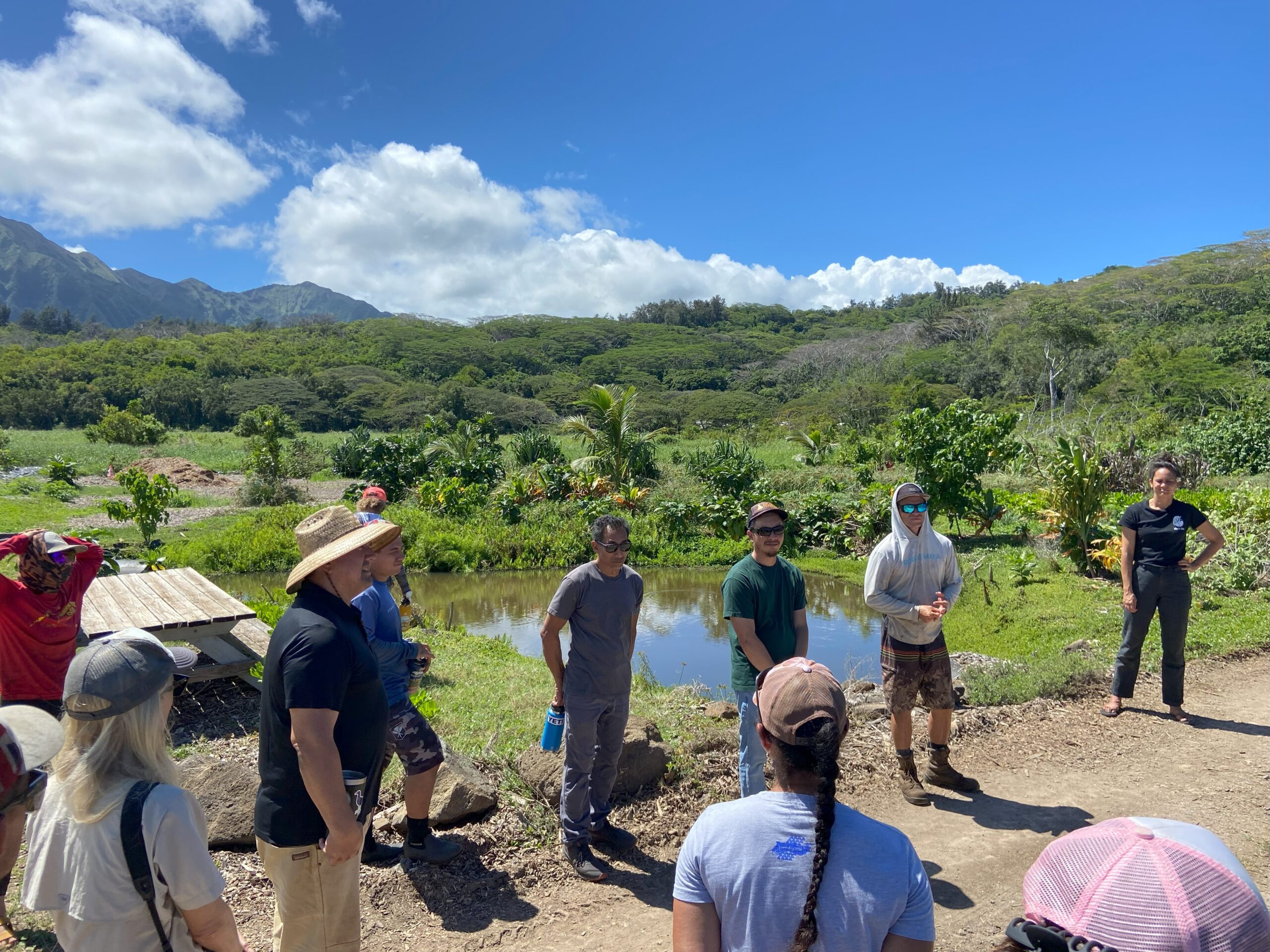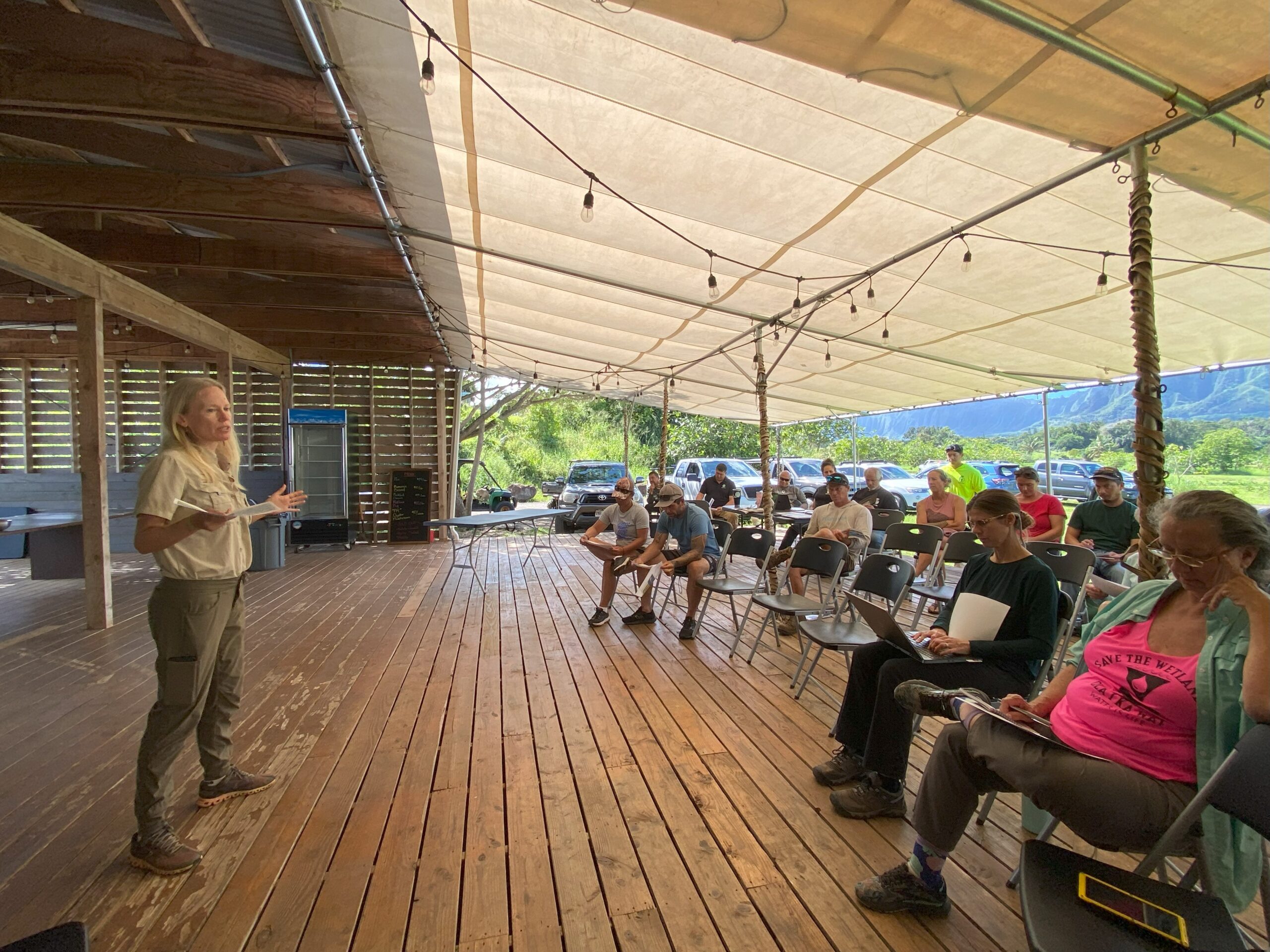
Before 1902, Hawaiʻi was a mangrove-free zone. Red mangrove was introduced on Molokaʻi to trap sediment caused by exploitative farming practices. It rapidly invaded to cover vast swathes of the Molokaʻi South Shore and has spread across the State. Removing it is a vital part of the fight to save loko iʻa (Hawaiian traditional fishponds), wetland habitat, and beaches for people and wildlife.
In late March, a group of over 20 cultural practitioners, scientists, and conservation managers came together to get into the weeds on mangrove management and removal. The workshop was supported by a National Fish and Wildlife Foundation grant to Molokaʻi Land Trust (MLT) to develop restoration plans for Punalau loko iʻa and Kākahaʻi National Wildlife Refuge on the south shore of Molokaʻi.

Nonprofits Paepae o Heʻeia, Kākoʻo ʻŌiwi, and partners with the Heʻeia NERR have spent decades refining mangrove removal techniques, by hand and by machine. Their work is inspiring - acres that were once impenetrable mangrove with little value, are now healthy and productive open water habitat, loko iʻa, and loʻi kalo (taro pond fields). They shared their expertise on the ground and lessons learned (sometimes the hard way!) with participants including Molokaʻi Land Trust (MLT), Pacific Birds, Hawaiʻi Department of Land and Natural Resources - Division of Forestry and Wildlife and Division of Aquatic Resources (DAR), U.S. Fish and Wildlife Service, Marine Corps Base Hawaiʻi, The Nature Conservancy, Kamehameha Schools, and others.

The workshop featured discussions led by knowledge holders, including a discussion on mangrove removal methods and site management (Donald Gentzler, Kakoʻo ʻŌiwi) and a case study from Punalau Pond (Butch Haase, Molokaʻi Land Trust). Helen Raine of Pacific Birds shared how recent declines in Endangered waterbirds, particularly the ʻalae ʻula which numbers just 700 birds total, makes this work incredibly urgent, while Kim Falinski (The Nature Conservancy) explored wetland monitoring and data collection, and Anthony Olegario (DAR) provided insight into the permitting process, restoration methods, and gave tips to ease the pain of that process. Workshop proceedings will be published in the near future.


Major takeaways included an acknowledgement of the importance of collaboration between organizations, land stewards, and agencies, and the potential for the restoration permitting process to benefit from additional clarity and simplification.
Going forward, MLT and partners will be using the outputs from the workshop to create a comprehensive restoration and mangrove removal plan for Punalau.
For more information on mangrove removal and wetland restoration, reach out to Anthony Olegario, Watershed Restoration Specialist with the Department of Land and Natural Resources-Division of Aquatic Resources.
